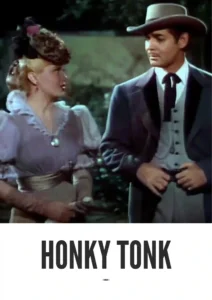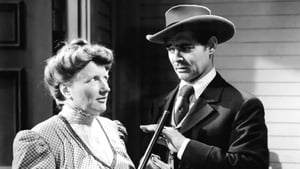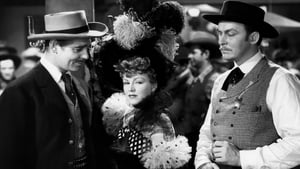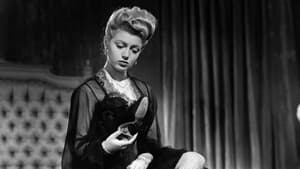Video Sources 0 Views
- Watch trailer
- Honky Tonk 1941 Colorized


Synopsis
Table of Contents
ToggleGamble and Glamour: Honky Tonk (1941) in Stunning Color

Step into the dazzling yet dangerous world of the Old West with Honky Tonk, a captivating western romance from 1941, now beautifully colorized for an immersive viewing experience. Starring the charismatic Clark Gable, this film, also known as The Americano, delivers a thrilling blend of romance, drama, and adventure against a backdrop of saloons and high-stakes gambling. Perfect for fans of classic westerns and those who appreciate a sweeping love story, this HD download brings a vibrant piece of cinematic history to your screen.
Honky Tonk Storyline: A Swindler’s Journey
Honky Tonk follows the story of “Candy” Johnson (Clark Gable), a charismatic con artist and gambler who arrives in a small western town with big dreams. He quickly establishes himself as a prominent figure, opening a saloon and becoming involved in local politics.As Candy navigates the challenges and opportunities of his new life, he meets and falls in love with Elizabeth Cotton (Lana Turner), the refined daughter of a judge. Their relationship is complicated by Candy’s shady past and the disapproval of Elizabeth’s family. A series of conflicts and betrayals test their love, as Candy is forced to confront his own morality and choose between his ambition and his heart. The film culminates in a dramatic showdown, showcasing the grit and determination of its characters. Ultimately, Honky Tonk is a compelling tale of love, redemption, and the enduring spirit of the Old West.
Movie Cast
The film features a stellar cast of actors who bring this romantic western to life:
- Clark Gable as “Candy” Johnson
- Lana Turner as Elizabeth Cotton
- Frank Morgan as “Judge” Cotton
- Claire Trevor as “Gold Dust” Nelson
- Marjorie Main as Mrs. Varner
Movie Genre
Honky Tonk falls into the genre of western romance, with elements of drama and adventure that are characteristic of classic Hollywood. Its sweeping love story and vibrant setting make it a captivating and engaging film.
Historical Context: Golden Age of Hollywood
Released in 1941, Honky Tonk represents a high point in the Golden Age of Hollywood, showcasing the star power of Clark Gable and Lana Turner. The film was produced during a period when westerns were immensely popular, and Honky Tonk offers a glimpse into the cultural values and cinematic styles of the time. While Honky Tonk is a celebrated film of its era, it provides valuable insights into the artistic and social landscape of mid-20th century America.
Colorization Details
This colorized version of Honky Tonk has been meticulously restored using modern digital techniques, enhancing the visual appeal while preserving the film’s original atmosphere of romance and adventure. The colorization process involved carefully analyzing the grayscale tones of the original black and white footage and assigning appropriate colors to each scene. While the specific software used remains proprietary, the techniques employed included advanced algorithms for color palette selection and image enhancement. This painstaking process brings new life to the characters and settings, making the story even more engaging for modern audiences. While some may debate the merits of colorizing classic films, it introduces these films to a broader audience, ensuring their legacy for future generations.
Technical Details
- Director: Jack Conway
- Screenplay: Marguerite Roberts, John Sanford
- Story: Walter Hackett
- Cinematography: Harold Rosson
- Edited by: Frank E. Hull
- Production Company: Metro-Goldwyn-Mayer
- Distributed by: Metro-Goldwyn-Mayer
- Runtime: 105 minutes
Technical Specifications
- Download Format: MP4
- Resolution: HD (1080p)
- Compatibility: Compatible with most devices, including smartphones, tablets, computers, and smart TVs.
Reviews and Critical Reception
Honky Tonk (1941) is often seen as a highlight in both Clark Gable’s and Lana Turner’s careers, celebrated for its engaging storyline and charismatic performances. While it may not be considered a groundbreaking film, it remains a beloved and entertaining example of classic Hollywood and a treasured piece for western enthusiasts. As a popular and captivating film, Honky Tonk provides a delightful perspective on the romantic westerns of its time.
FAQs
- Q: What is Honky Tonk about?
- A: Honky Tonk is a western romance about a con artist who falls in love with a judge’s daughter in a small western town.
- Q: Is Honky Tonk (1941) a well-known film?
- A: Honky Tonk is a celebrated film from the Golden Age of Hollywood, known for its star power and engaging storyline.
- Q: Is this version of Honky Tonk colorized?
- A: Yes, this version has been professionally colorized to enhance the viewing experience.
- Q: What makes Honky Tonk interesting for classic film fans?
- A: Honky Tonk offers valuable insights into the Golden Age of Hollywood, showcasing the star power of Clark Gable and Lana Turner.
- Q: What is the download format?
- A: The download format is MP4, which is compatible with most devices.
- Q: What resolution is the download?
- A: The resolution is HD (1080p), providing a high-quality viewing experience.
Download Now in HD!
Watch Honky Tonk Today!













